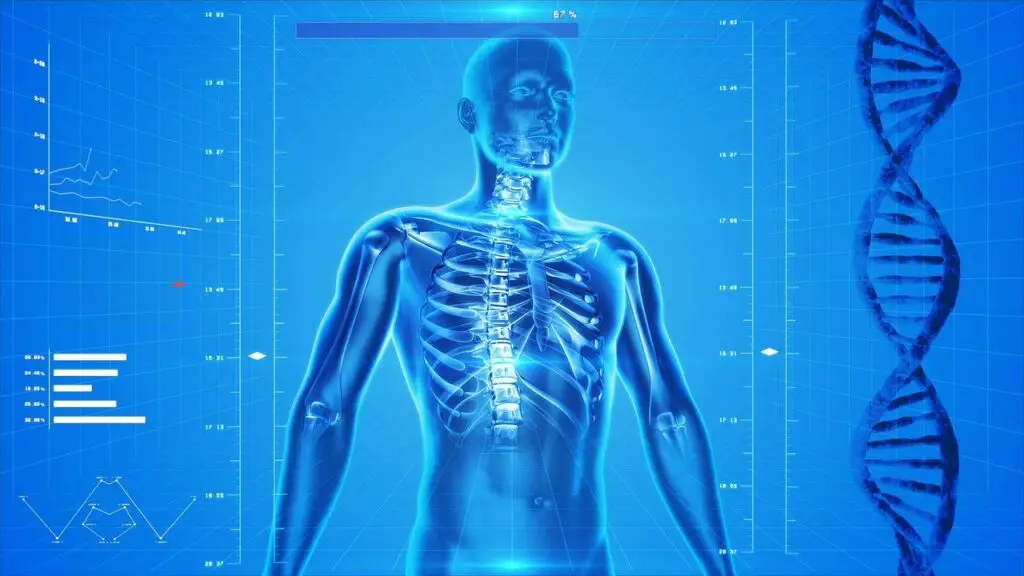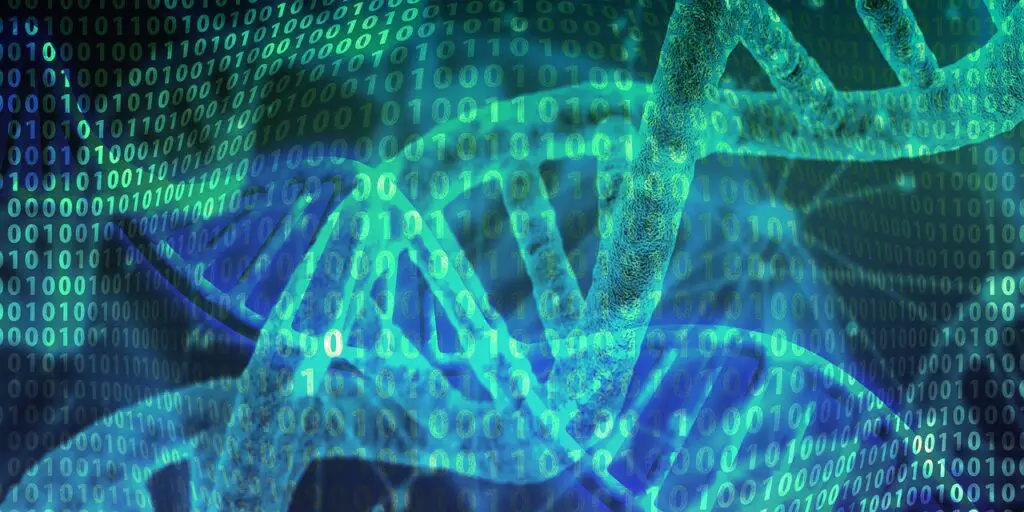Are Humans Carbon Based Lifeforms? If YES, then why?
Yes, humans are carbon based lifeforms. Carbon is the most important element of life. About 18% mass composition of the human body is composed of carbon.
Oxygen is the most abundant element in the human body with about 65% mass. Carbon, the basic unit for organic molecules, comes in the second position.
Carbon is a prominent structural element of the various important molecules like carbohydrates, fats, nucleic acids, and proteins in our body.
Not only humans but Carbon is also a primary component of all known life on Earth. Carbon represents approximately 45–50% of all dry biomass on earth.
The biomolecules that we have in our body are majorly composed of Carbon structures bonded with other elements like oxygen, hydrogen, nitrogen, phosphorus, sulfur, etc.
Proteins, fats, lipids, hydroxylapatite in bones, carbohydrates such as glycogen and glucose, nucleic acids like DNA and RNA are all composed of the Carbon backbone. These biomolecules are significant units of life.

Why are humans called carbon based lifeforms?
Carbon is one of the most abundant elements in nature. The carbon sinks are the great reservoirs of carbon that bring it back to lifeforms via. the carbon cycle.
It is the basic backbone and the structural element of the human body. It form molecules with other elements to create life and body.
And that’s not all, there are various other reasons to say why humans are called carbon based lifeforms.
Some of the most prominent reasons are as follows…
1. Every part of our body is made up of chains of carbon atoms
Each and every part of our body is made up of chains of carbon atoms. The carbon atoms form the basic backbone and bonds the other molecules together, thus forming the body and its structure from the minute level. That’s the primary reason to consider why humans are called carbon-based lifeforms.
Almost 99% of the mass of the human body is made up of six elements: oxygen, carbon, hydrogen, nitrogen, calcium, and phosphorus. Of which carbon is the most important and the second abundant one in the human body.
Carbon atoms are covalent in nature therefore they share 4 electrons to other elements and receive another 4 to complete its valency.
Using that it can form single, double, or triple bonds thus making itself more stable to withstand the various structures of the body more firmly.
2. It makes up thousands of biomolecules
Probably every biomolecule in the human body consist of the carbon backbone and structure. In fact, the essential molecules like proteins, DNA, RNA, sugars, and fats are all composed of carbon in their structures.
These complex biological molecules and their derivatives are often called macromolecules and are quite stable due to their structure. Hydrocarbons are the most found biomolecules in the human body.
Hydrocarbons like methane contain one carbon bonded to four hydrogens. Ethane is another example of a simple hydrocarbon.
Proteins make our body, and in fact, proteins are the primary building materials or blocks of the body. Anything you can imagine in the biological body like hair, skin, muscles, or even the organs are all composed mostly of proteins. Proteins can be defined as polypeptide chains of simple amino acids which are also composed of the carbon backbone.
Fats and lipids are the energy reservoirs of the body that also contain carbon.
How can one forget the Carbohydrates which are the quick source of energy for the body? All forms of carbohydrates (sugar) has carbon in their structure.
Nucleic acids too which contain the genetic materials are all composed of carbon and its molecules.
3. Carbon is the basic building block
Carbon is not only called the basic but also the universal building block of life. As already mentioned above that it forms the structure of the body from the unit level.
It’s called so because of its unique ability to form complex and stable molecules with itself and other elements, particularly hydrogen, oxygen, and nitrogen.
The structure of most parts of the body is supported by the carbon backbone at the molecular level.
These structures are mostly stable as they don’t get denaturated so easily over a higher range of temperatures. For example temperatures above 41°C is required to breakdown proteins
Moreover, the versatility and stability of carbon are further enhanced by its ability to form double and triple bonds, carbon-carbon bond energy, carbon’s electronegativity, and high activation energies for substitution.
4. It plays a crucial role in regulating the physiology of the body
It’s actually the molecules that carbon forms, directly play a crucial role in regulating the physiology of the body.
Gaseous and liquid compounds that contain carbon can also affect the body. Just take the example of respiration to understand this.
Humans inhale oxygen and exhale carbon dioxide. This is known as respiration. In the process, the oxygen goes to the cells of the body and, the carbon dioxide is taken out.
The Carbon dioxide that is taken out of the body is formed from the metabolism of carbohydrates, fats, and amino acids, in a process known as cellular respiration.
Another one can be how carbon along with oxygen as carbon dioxide regulates the pH of blood, stimulates breathing, and influences the affinity of oxygen to carry hemoglobin in the blood.
So, this is just a showcase of how carbon plays a crucial role. There are hundreds of other processes to consider.
5. Carbon is the bio-energy
Carbon is actually present in the body as a form of bioenergy or biomass. The strong bonds that carbon atoms form in the various bio-molecular structures are a very good example of bioenergy stored in the body.
Carbon in the form of biomass or bioenergy enters the human body via. the carbon cycle steps. These are in fact utilized to run our day to day activities from the molecular point of view.
Just take the example of cellular energy. Whenever a cell needs energy, it takes it from ATP. Cells get energy in the form of ATP through a process called respiration which follows a series of chemical reactions oxidizing six-carbon glucose to form carbon dioxide.
Here, Glucose which is a carbon compound is the fast and the immediate source of the bio-energy for humans.
Glucose provides the immediate energy that can be used by the cells whenever needed.
Lipids or fats which also contain carbons are the reservoirs of bio-energy in the body.
In order to obtain energy from fat, the fat triglycerides are broken down by the process of hydrolysis into fatty acids and glycerol.
Composition of the human body
Major Classes of Compounds:
- The body is composed of 62% water.
- It’s composed of 16% protein.
- It’s composed of 1% carbohydrate.
- It’s composed of 6% minerals.
- And, also composed of 16% fat.
Elements in the Human body is composed of:
- 65% Oxygen
- 18% Carbon
- 9.5% Hydrogen
- 3.2% Nitrogen
- 1.5% Calcium
- 1.2% Phosphorus
- 0.4% Potassium
- 0.2% Sulfur
- 0.2% Sodium
- 0.2% Chlorine
- 0.1% Magnesium
- More than 1% other elements

Can life be non carbon based?
No, life cannot be noncarbon based. No life on earth can actually exist without carbon. All known living things have a carbon-based structure and system.
However, there are various hypotheses put forward by various scientists that say that noncarbon based lifeform is actually possible. But, there’s not any strong evidence to such hypothetical theories.
Scientists still argue about the alternatives of carbon that can make life possible but, no one has actually proposed a theory employing such atoms to have all necessary characters like carbon.
Carl Sagan regarded silicon and germanium as similar alternatives to carbon. He also mentioned other elements like palladium and titanium as reasonable alternatives.
But, it was still seen that carbon is more versatile, stable, and more abundant in the universe. So, this hypothesis doesn’t bring any light to the idea of noncarbon based life.
So, modern-day science still belive that silicon and germanium based life may be more than just science fiction. But wait, there are many who still argue that it’s not a fiction but a topic of noteworthy discussion.
Noncarbon life is not possible because of the perfect replacement of carbon which acts like it and has the same physio and chemical properties is not available.
But, if the replacement of carbon is to be considered then we should also take notice of the replacement of other atoms like oxygen, phosphorus, etc. with some other alternatives, or else it won’t simply fit the biochemical model.
Another thing is that the alternative element of carbon should be abundant biologically and form approximately 90% or more of biomass and should take part in the nutrient cycle for the proper flow of the element.

Importance of Carbon in the various biomolecules
Carbon is the functional element for living things because it’s able to bond in many different ways. It can form many compounds that are essential to life.
Here we will consider the most important bio-molecules and the importance of carbon in these following biomolecules:
1. Proteins: Proteins are the main workforce in all living systems. Hydrophobic interactions are the dominant force in this protein structure. Carbon is the only atom that contributes towards that force.
2. Carbohydrates: They are compounds of carbon, hydrogen, and oxygen with a ratio of two hydrogens for every oxygen atom. This structure due to the carbon backbone helps in the formation of glycosidic linkages of sugar molecules to other molecules.
3. Fats: Fatty acid chains are held together by carbon atoms that attach to each other and to hydrogen atoms.
4. Nucleic Acids: The sugars found in nucleic acids are pentose sugars, and a pentose sugar has five carbon atoms. Thus, carbon gives the sugar part its structure leading to the formation of DNA and RNA.
5. Vitamins: Vitamins are medium sized biomolecules which contain carbon and are, therefore called organic molecules.
6. Enzymes: Carbonic anhydrase is an enzyme made of carbon that catalyzes the inter-conversion between carbon dioxide and water and the dissociated ions of carbonic acid.
